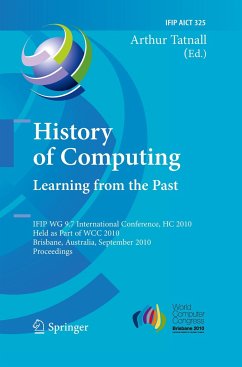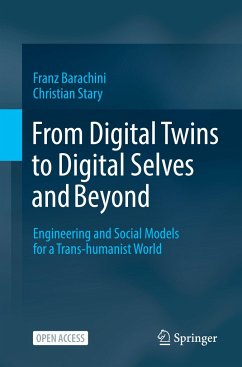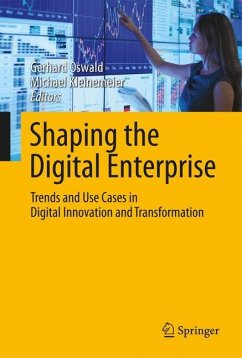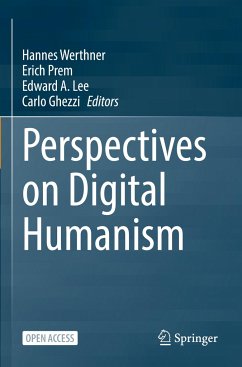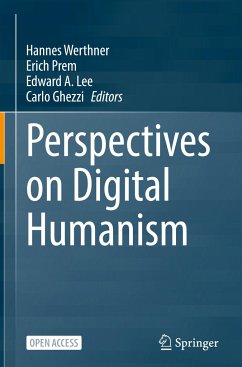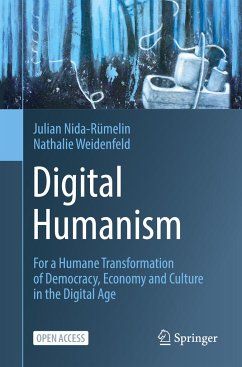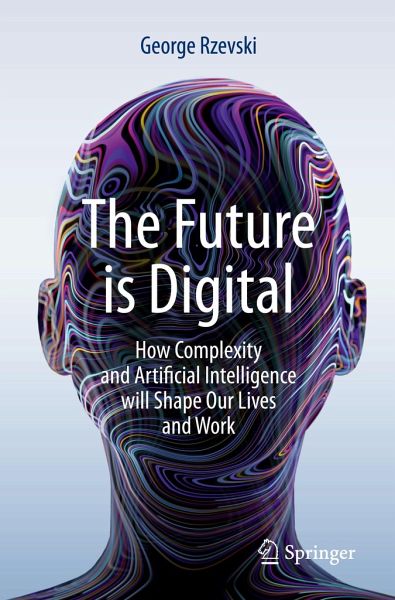
The Future is Digital
How Complexity and Artificial Intelligence will Shape Our Lives and Work

PAYBACK Punkte
13 °P sammeln!
This book describes in an easily accessible way how artificial intelligence (AI) will help us to overcome the ongoing rise in complexity and thus shape our lives and work in a not-too-distant future. AI has proven to be the latest tool for resolving issues created by the most recent surge in complexity, and the corollary is: those who delay or ignore AI, will be overwhelmed by complexity.The book starts with a broad description of the coevolution of technology and society that irreversibly leads to the sharp increase in complexity of our socioeconomic environment. The second chapter then cover...
This book describes in an easily accessible way how artificial intelligence (AI) will help us to overcome the ongoing rise in complexity and thus shape our lives and work in a not-too-distant future. AI has proven to be the latest tool for resolving issues created by the most recent surge in complexity, and the corollary is: those who delay or ignore AI, will be overwhelmed by complexity.
The book starts with a broad description of the coevolution of technology and society that irreversibly leads to the sharp increase in complexity of our socioeconomic environment. The second chapter then covers concepts and principles of the new science of complexity which helps us to understand issues caused by socioeconomic complexity and provides methods for resolving them. Subsequently, a beginner's guide to artificial intelligence helps readers to glance at fundamentals of this powerful technology capable of resolving issues created by socioeconomic complexity. Thedanger of allowing intelligent digital systems to make high-risk decisions as well as the consequences of possible misuse of AI for fraud and fake are also discussed. The following chapter explores the concepts of natural and digital ecosystems. Digital transformation of rigidly structured corporations and administrations into adaptive and evolving organisations are illustrated by a number of case studies. Next, the current hectic transition of industrial to digital society is described, its origins identified and outcomes predicted, highlighting issues created by the increase in complexity and showing how to resolve them using thinking tools such as a complexity mindset and digital tools such as artificial intelligence. Eventually, the last two chapters outline the author's vision of the future digital economy and digital society.
This book is accessible to everyone who is curious to glimpse into the future, no previous special knowledge of digital technology isrequired. Especially decision makers in politics, business, administration, banking, policy making, education, healthcare and defence, and their advisors will benefit from the book, as it will help them to contribute to the creation of the brave new digital world. It may also support investors to recognise which elements of digital technology will play the most important role in the near future.
The book starts with a broad description of the coevolution of technology and society that irreversibly leads to the sharp increase in complexity of our socioeconomic environment. The second chapter then covers concepts and principles of the new science of complexity which helps us to understand issues caused by socioeconomic complexity and provides methods for resolving them. Subsequently, a beginner's guide to artificial intelligence helps readers to glance at fundamentals of this powerful technology capable of resolving issues created by socioeconomic complexity. Thedanger of allowing intelligent digital systems to make high-risk decisions as well as the consequences of possible misuse of AI for fraud and fake are also discussed. The following chapter explores the concepts of natural and digital ecosystems. Digital transformation of rigidly structured corporations and administrations into adaptive and evolving organisations are illustrated by a number of case studies. Next, the current hectic transition of industrial to digital society is described, its origins identified and outcomes predicted, highlighting issues created by the increase in complexity and showing how to resolve them using thinking tools such as a complexity mindset and digital tools such as artificial intelligence. Eventually, the last two chapters outline the author's vision of the future digital economy and digital society.
This book is accessible to everyone who is curious to glimpse into the future, no previous special knowledge of digital technology isrequired. Especially decision makers in politics, business, administration, banking, policy making, education, healthcare and defence, and their advisors will benefit from the book, as it will help them to contribute to the creation of the brave new digital world. It may also support investors to recognise which elements of digital technology will play the most important role in the near future.






